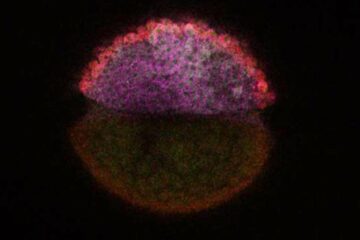Lead-Based Consumer Paint Remains a Global Public Health Threat

In a new study, Scott Clark, PhD, and his team have found that approximately 73 percent of consumer paint brands tested from 12 countries representing 46 percent of the world’s population exceeded current U.S. standard of 600 parts per million (ppm) for lead in paint. In addition, 69 percent of the brands had at least one sample exceeding 10,000 ppm. With the majority of American consumer goods being produced overseas, Clark says that lead paint exposure remains a serious global health threat.
“A global ban on lead-based paint is drastically needed to protect the more than three billion people who may be exposed in the countries allowing distribution of lead-containing paints as well as Americans unintentionally exposed through consumer products exported to the United States,” says Clark, a professor of environmental health at UC and principal investigator of the study.
The UC team reports their findings in the journal Environmental Research online ahead of publication on Aug. 4, 2009. The report comes on the tail of the U.S. Consumer Product Safety Commission’s enforcement of heightened restrictions on lead in American consumer paints, which will take effect Aug. 9, 2009, and will lower the allowable lead limit from 600 parts per million (ppm) to 90 ppm..
“This revised standard for lead in consumer paint is grossly overdue,” adds Clark. “The previous limit of 600 ppm for lead in new pant was established more than 30 years ago when the blood-lead level of concern was much higher than at present. Modern research has shown that children are affected at very low exposure levels and that there is no safe level of exposure.”
For the current study, Clark analyzed a total of 373 new household enamel paint samples of various colors and brands from 12 countries in Africa, Asia and South America—with a minimum of 10 samples from most countries included in analysis. His goal was to determine the amount of lead and how it compares to U.S. standards. His team also analyzed the consumer cost of leaded and unleaded paint.
Each paint sample was applied in a single layer to a wood block, left to dry and then removed and analyzed in UC laboratories for lead content. Researchers determined that 73 percent of the paint companies’ products tested had lead concentrations exceeding current U.S. standards.
In September 2006, Clark’s team published what is believed to be the first scientific report to show that unregulated Asian countries produced and sold new consumer paints that greatly exceeded U.S. lead safety levels. In that study, 75 percent of the consumer paint samples tested from countries without controls— including India, Malaysia and China—had levels exceeding U.S. regulations.
“Although lead poisoning of children is widely recognized as a major public health problem, too little attention is being given to correcting the problem in many parts of the world,” says Clark. “Meanwhile, thousands of children continue to be poisoned by the metal, setting them up for life-threatening problems later in life.
“Our studies have shown that when comparing the prices of the same size can of paint produced by several companies within India with a wide range of lead concentrations, there is no significant consumer price difference between leaded and unleaded consumer paint,” says Clark.
Their research showed that one large multi-national company produced low lead paint in each of the countries where it was sampled and another company was found to have stopped using lead in paints in one country during the course of our study.
“These two observations document the fact that the technology is available so that manufacturers do not need to use lead to produce high-quality paint,” adds Clark. “There is no legitimate reason paint manufacturers—particularly the large, multinational companies we analyzed with more depth in the current study—should knowingly distribute a product that has long been known to be dangerous to people.”
Clark says calls for a global ban on the use of lead in paints—such as the one in made in his 2006 paper—appear to be having some impact. In May of 2009, a United Nations—-sponsored international forum passed a resolution to establish a global partnership to achieve such a goal.
This research was funded by the UC’s environmental health department and division of occupational health and hygiene, with partial support from the NITON Division of ThermoFisher Corporation for a portion of the travel within China.
Collaborators in this study include Sandy Roda, Bill Menrath and Paul Succop of UC, Krishna Rampal, MD, of the University Kebangsaan Malaysia, Venkatesh Thuppil, PhD, of the National Referral Center for Lead Poisoning Prevention in India, and Chin Chen of the Occupational Safety and Health Center at Singapore Polytechnic.
Media Contact
More Information:
http://www.uc.eduAll latest news from the category: Studies and Analyses
innovations-report maintains a wealth of in-depth studies and analyses from a variety of subject areas including business and finance, medicine and pharmacology, ecology and the environment, energy, communications and media, transportation, work, family and leisure.
Newest articles

Attosecond core-level spectroscopy reveals real-time molecular dynamics
Chemical reactions are complex mechanisms. Many different dynamical processes are involved, affecting both the electrons and the nucleus of the present atoms. Very often the strongly coupled electron and nuclear…

Columbia researchers “unzip” 2D materials with lasers
The new technique can modify the nanostructure of bulk and 2D crystals without a cleanroom or expensive etching equipment. In a new paper published on May 1 in the journal…

Decoding development: mRNA’s role in embryo formation
A new study at Hebrew University reveals insights into mRNA regulation during embryonic development. The study combines single-cell RNA-Seq and metabolic labeling in zebrafish embryos, distinguishing between newly-transcribed and pre-existing…





















